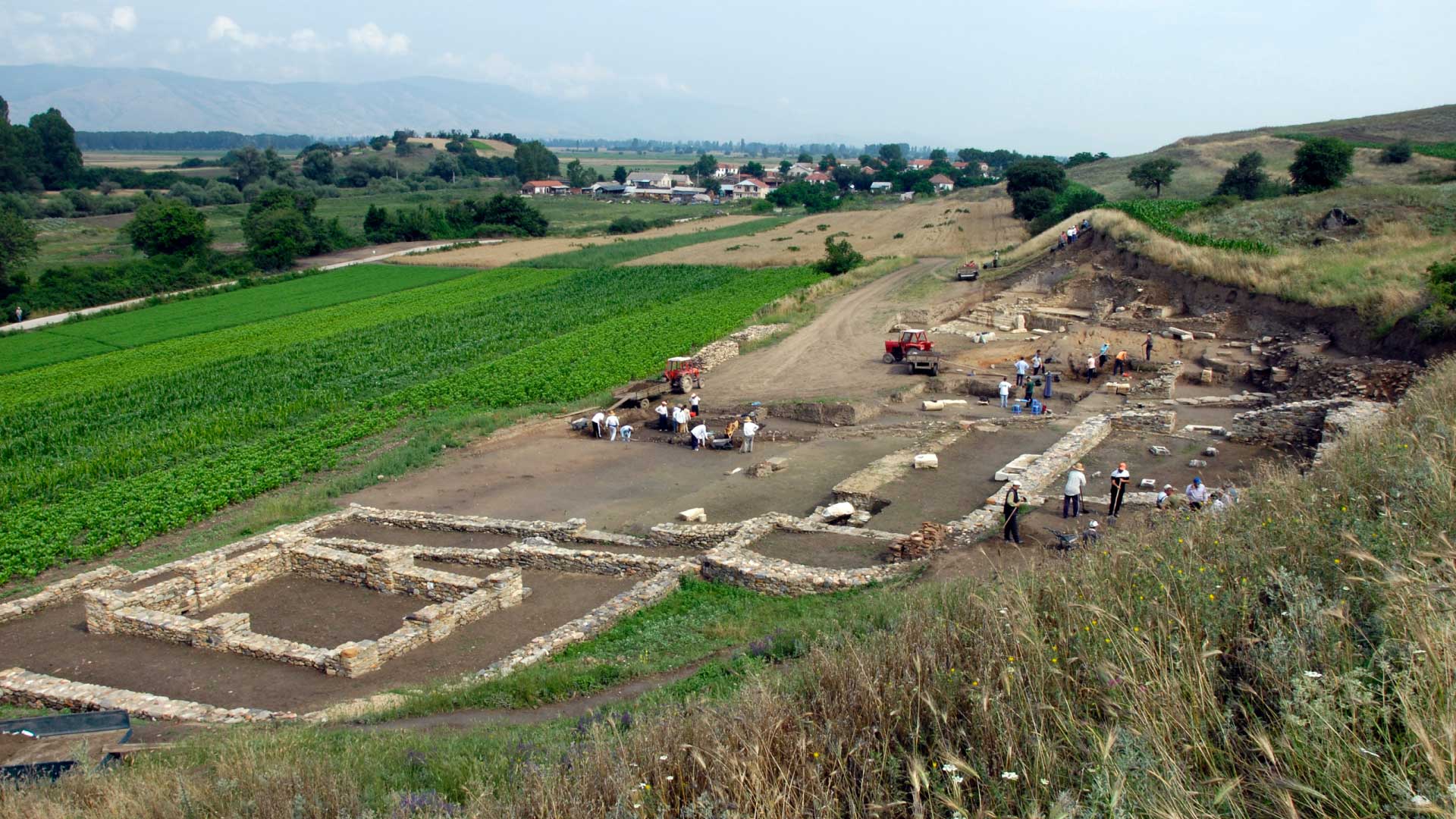The city of Styberra, an urban center in the Deriop region of the Pelagonija Valley, was one of the largest ancient cities in the Republic of Macedonia. Its location was identified through archaeological research and it can be pinpointed at approximately 16 km southwest of the city of Prilep, in close proximity to the village of Chepigovo. It was spread over a larger area on both sides of the Blato River, up to its drainage basin with the Crna River near the neighbouring village of Trojkrsti.
Ancient written sources tell us that Styberra was a city of strategic significance, even during the reign of Macedonian kings (4th-3rd century BC). During the Second Macedonian-Roman War, the Roman legions that temporarily occupied the wider region supplied themselves with the necessary grain from Styberra. During the Third and final war which was waged between Macedonia and Rome (first half of the 2nd century BC), the last Macedonian king, Perseus, was stationed with his command staff in Styberra for a certain period of time, from where he was in charge of the military operations towards the western territories populated by the Illyrians, allies of the Romans.
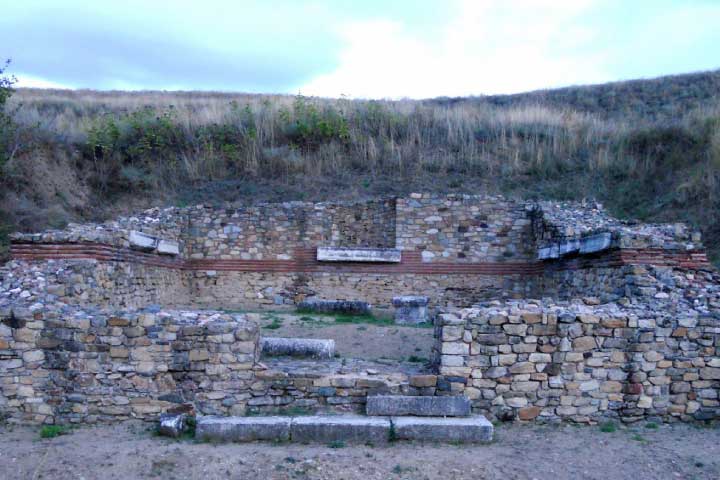
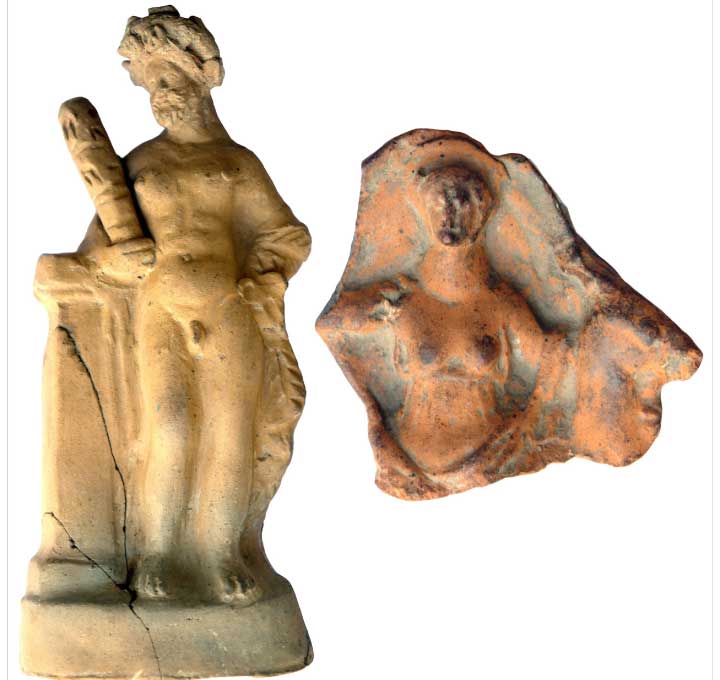
From this pre-Roman period, remains of buildings have been found through field archaeological research, but they are not well preserved, so their purpose cannot be precisely defined. The structures from this time are preserved only in their foundations, since with the arrival of the Roman administration, new living facilities, as well as public and economic buildings were built in their place.
Essentially, Styberra reached its zenith during the developed Roman imperial period (2nd-3rd century AD), specifically during the Nerva-Antonine dynasties. Several public buildings have been discovered from this time period: the Gymnasium, the square with a fountain, the temple in honor of the emperors, the temple dedicated to the city's patron goddess, Tyche, the administrative building on the main city square - the agora, the workshop for making clay figurines and lamps, and the city assembly.
The fact that there was a temple in the city where the emperors were celebrated speaks volumes about Styberra’s immense importance within the empire. This honor (neokoros) of being a city with such a temple was bestowed on a small number of cities.
In addition to the numerous objects found for everyday use, coins, jewelry, ceramicware, and various tools from the Macedonian and Roman periods of the city's existence, the numerous representative sculptures and marble busts depicting deities and deserving citizens from the Roman period stand out. Their number and high quality craftsmanship suggest that Styberra, with its 20,000 residents at the time, was truly a wealthy and significant city in this part of the empire.
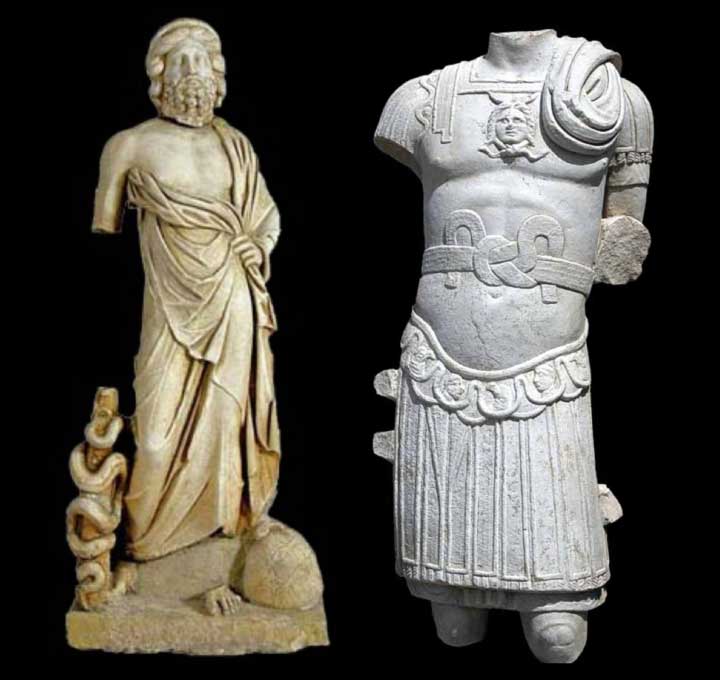
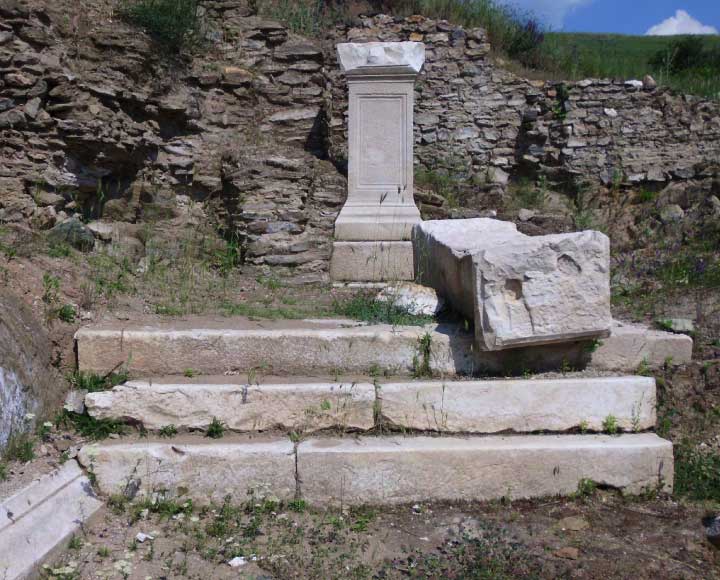
More buildings have been discovered from the zenith of the city in the imperial Roman period on the Bedem ridge and in its western foothills: the Gymnasium complex, the square with a fountain, the temple dedicated to the cult of the emperor, the temple to the city's patron Tyche, the administrative building on the main city square - the agora, the workshop for making terracotta and ceramic lamps, and the assembly - bouleuterion, the small sanctuary of a deity with a bird's face, while an open-type urban sacrificial altar has been identified at the Bakarno Gumno site at the western entrance to the village of Chepigovo.
An important thing found in Styberra is the marble bust of a woman, because according to certain analyses, it is believed to be a depiction of Faustina the Younger, the wife of the Roman emperor Marcus Aurelius, who ruled in the second half of the 2nd century.

